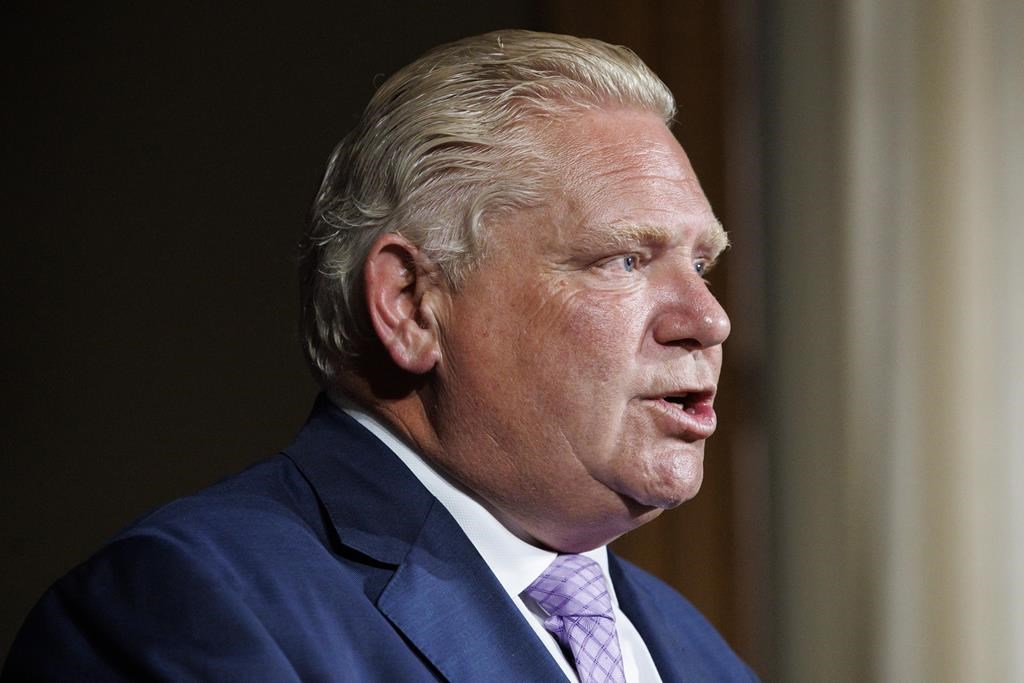Ontario Premier Doug Ford’s promise to hand the mayors of Toronto and Ottawa more powers could be a dangerous gateway to higher taxes and runaway government spending.
Hardworking taxpayers wouldn’t trust one person selected by someone else to unilaterally manage their household expenses and retirement savings, and yet that’s essentially what Ford might have up his sleeve for the residents of Toronto and Ottawa when it comes to the cities’ finances.
Ford has yet to officially outline all of the “strong mayor” powers he intends to give to the mayors of Toronto and Ottawa, but unilateral taxation and spending powers and mayoral vetoes appear to be on the table.
Giving mayors the power to tax and spend is courting disaster by gambling on who is in the mayor’s chair.
Take yourself back to 2009. The Pittsburgh Penguins won the Stanley Cup, General Motors was still making Pontiacs and David Miller was the mayor of Toronto.
Toronto taxpayers are still scarred by the historic property tax hike Miller forced on homeowners that year. Miller managed to convince members of Toronto’s city council to impose a 10 per cent hike in property taxes.
If Miller had the power to set tax rates and spending levels unilaterally, a 10 per cent property tax hike could have ballooned even further. Toronto taxpayers could have been staring down a 15 per cent or 20 per cent hike to finance Miller’s costly government spending schemes.
Some may argue that a fiscally responsible mayor could use unilateral taxation and spending powers to keep taxes low and government spending in check.
But for every fiscally responsible mayor, there’s a David Miller. That reality means handing mayors unilateral taxation and spending powers is a terrible idea. Without city council to keep a mayor in check, there’s no telling how high taxes could be raised or how much wasteful spending could be approved.
Mayoral vetoes would raise similar concerns. Ford has said publicly that part of his “strong mayor” proposal would include a mayoral veto, which could be overridden by two-thirds of city council.
Once again, whether these new powers would be good or bad for taxpayers depends on who is in the mayor’s chair.
A fiscally responsible mayor might veto wasteful government spending proposed by council. But a mayor willing to engage in reckless spending could also veto a fiscally responsible budget plan.
There’s also another risk: mayoral candidates could sell themselves as sound managers of taxpayer dollars, but embrace runaway taxes and government spending once in office.
Toronto Mayor John Tory is a perfect example. When he ran for mayor in 2014, Tory pledged to restrict the growth of property taxes to the level of inflation. But Tory has since embraced higher property taxes. This past January, Tory threw his support behind a proposal to raise property taxes by 4.4 per cent.
Even if voters think they’re electing a mayor who will responsibly manage the city’s finances, there’s no telling how much a candidate will change after being sworn into office.
The bottom line is that handing mayors new powers to get around the check-and-balance role of council is a dangerous gamble. Depending on who is in the mayor’s chair, taxpayers could benefit or get soaked with higher taxes and reckless government spending. The risks simply aren’t worth the potential gains.
Ford should shelve his plan to give new powers to the mayors of Toronto and Ottawa. Instead, he should focus on reforms that could bring real relief to taxpayers through more responsible city budgeting.
Jay Goldberg is the Ontario Director at the Canadian Taxpayers Federation





